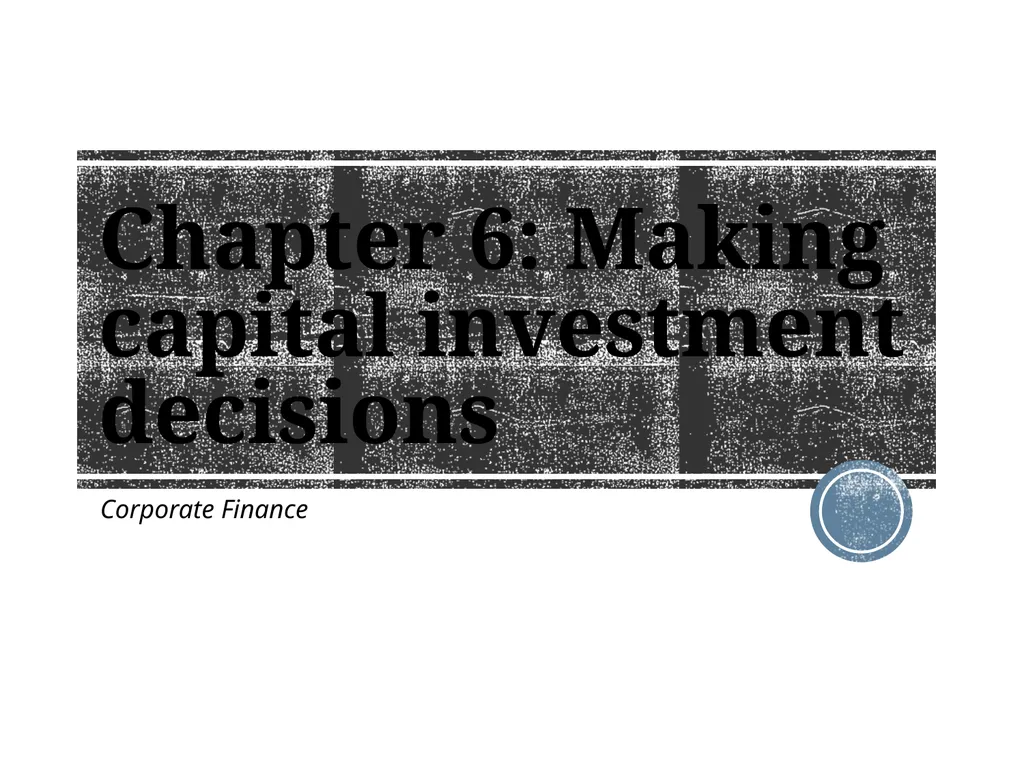
Chapter 6: Making capital investment decisions
Author: lois-ondreau | Published: 2025-06-16
Description: Chapter 6: Making capital investment decisions Corporate Finance Outline I. Relevantincremental cash flows II. An example III. The equivalent annual cost method TVM We need to evaluate a new project using the TVM technique. That is, we
Download Presentation
Download the PPT/PDF: Download
Transcript:
Loading transcript…